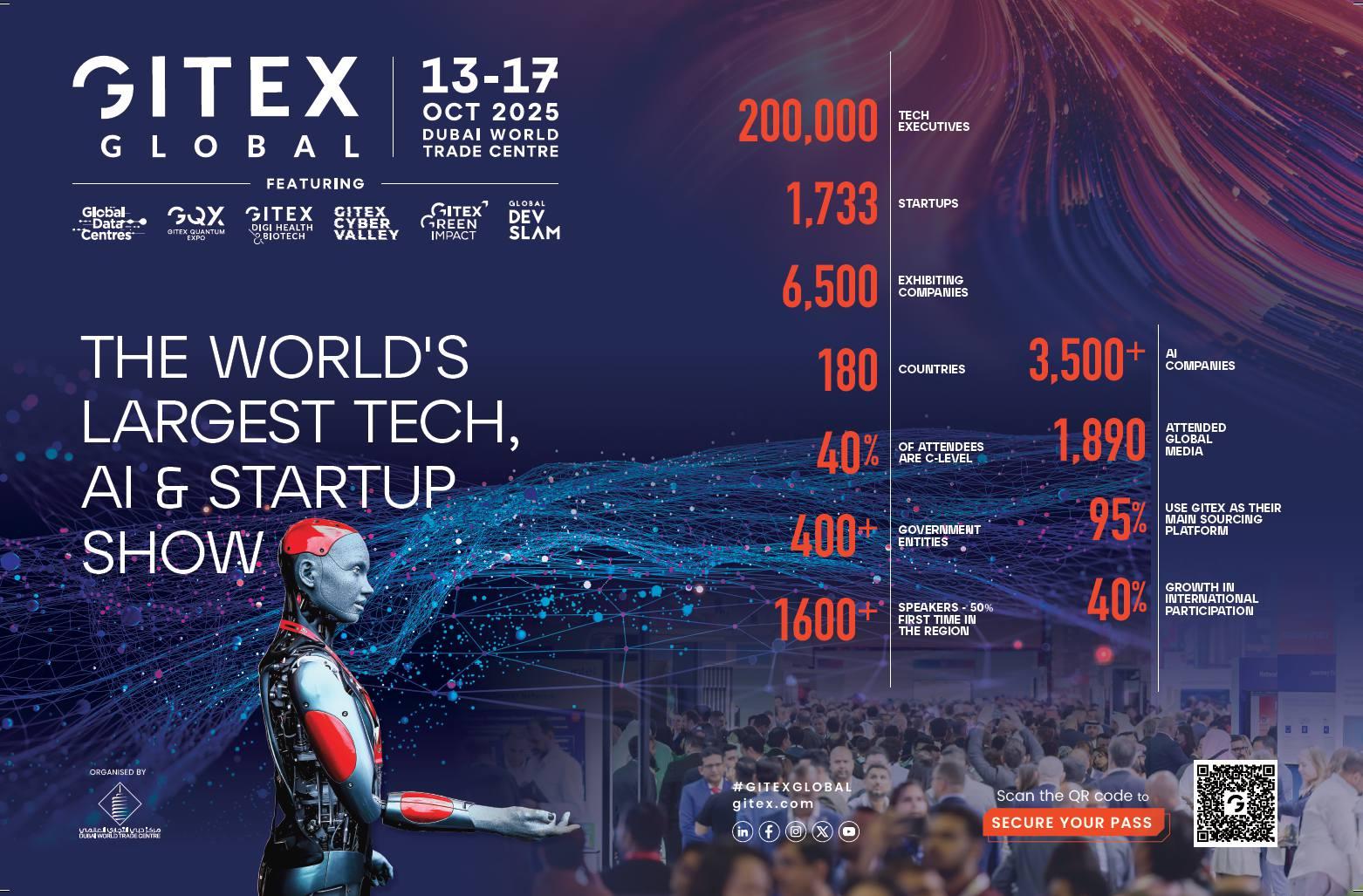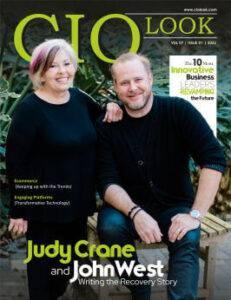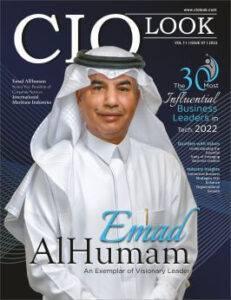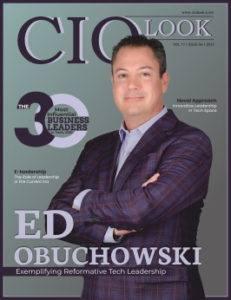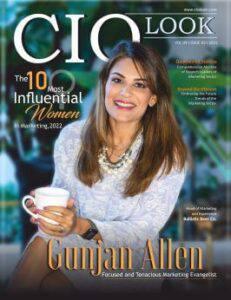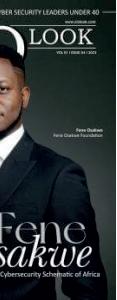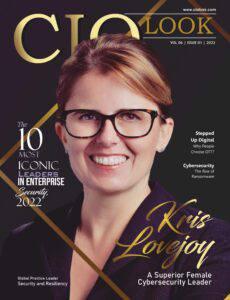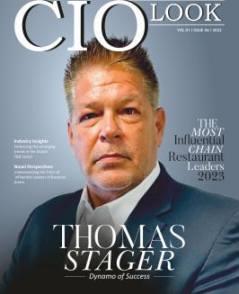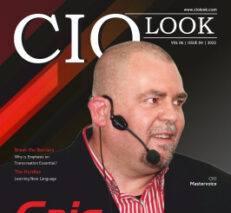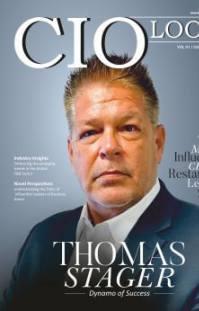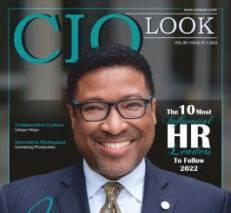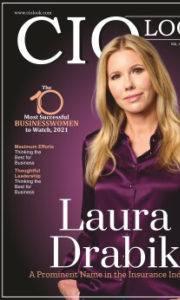Embracing Evolu�on
Driving Business Transforma�on to Achieve Compe��ve Advantage
From Startups to Giants The Rise of Market Disruptors in Today's Economy
KhalidKhan Partner|AmericasDigital &AnalyticsPracticeLeader Kearney






Embracing Evolu�on
Driving Business Transforma�on to Achieve Compe��ve Advantage
From Startups to Giants The Rise of Market Disruptors in Today's Economy
KhalidKhan Partner|AmericasDigital &AnalyticsPracticeLeader Kearney





The pace of transformation across industries has
reached unprecedented momentum. Innovation is nolongerconfinedtoincrementalimprovements;it nowdemandsacompletereimaginingofsystems,business models, and customer experiences at their very core Organizations are moving beyond traditional boundaries, embracing digital technologies, sustainability-driven strategies, and new frameworks of collaboration that fundamentally alter the way value is created and delivered. What was once considered disruptive has become the new standard,compellingbusinessestothinkwithgreateragility andforesight.
CIOLookinitsexclusivefeatureMostVisionaryPioneers TransformingtheIndustryin2025highlightstheleaders, entrepreneurs, and changemakers who are redefining the future.Thesepioneersstandoutnotonlyfortheirabilityto adapt to change but also for their foresight to anticipate it and,inmanyinstances,toshapeit.Fromharnessingartificial intelligence to driving breakthroughs in healthcare, energy,

and sustainability, as well as reshaping global trade and consumer ecosystems, they embody the vanguard of progress. Each of them illustrates how bold ideas, when paired with execution and resilience, can redefine entire industries.
As businesses confront complex challenges ranging from climate imperatives to digital disruption, these individuals demonstratethatvisionmustbematchedwithresponsibility They show that profitability and purpose are not mutually exclusivebutinsteadrepresenttwosidesofthesamecoinfor long-term success.Their journeys serve both as inspiration and as a roadmap for organizations striving to remain relevantandcompetitiveinanincreasinglydynamicworld.
Haveagreatreadahead!

16
Embracing Evolu�on Driving Business Transforma�on to Achieve Compe��ve Advantage The Front Page
From Startups to Giants The Rise of Market Disruptors in Today's Economy


PoojaMBansal Editor-in-Chief
CONTENT
Deputy Editor Anish Miller
Managing Editor Prince Bolton
DESIGN
Visualizer Dave Bates
Art & Design Director Davis Mar�n
Associate Designer Jameson Carl
SALES
Senior Sales Manager Wilson T., Hunter D.
Customer Success Manager Nelson M.
Sales Execu�ves Tim, Smith
TECHNICAL
Technical Head Peter Hayden
Technical Consultant Victor Collins August,
Research Analyst Eric Smith
SEO Execu�ve Alen Spencer
FOLLOWUSON


www facebook.com/ciolookmedia/ www.x.com/ciolookMedia
www.linkedin.com/company/ciolook
WE ARE ALSO AVAILABLE ON
CONTACTUSON
Email info@ciolook com
For Subscrip�on www.ciolookmedia.com
Copyright © 2025 CIOLOOK, All rights reserved. The content and images used in this magazine should not be reproduced or transmi�ed in any form or by any means, electronic, mechanical, photocopying, recording or otherwise, without prior permission from CIOLOOK. Reprint rights remain solely with CIOLOOK.
AlejandroLlano PartnerandAssociate DirectoratGo4it
AliSidani SeniorDirector InformationTechnology
JuanVega-Penichet Aguirre SeniorKey AccountManager
KhalidKhan Partner|Americas Digital&Analytics PracticeLeaders
SebastienCanton PartneratBMH AVOCATS
Huawei huawei.com
ROSHNl alj-enterprises.com
ElectraIronhack electra.com
Kearney kearney.com
BMHAvocats bmhavocats.com
Alejandrohasastrongtrackrecordindevelopingstrategiesthat bridgetechnologyandbusinesspriorities,enablingcompanies toachievecompetitiveadvantageinfast-changingmarkets.
SidaniistheSeniorDirectorofInformationTechnologyat ROSHN,basedinRiyadh,SaudiArabia.Hehasextensive experienceinbanking,audit,andITleadershiproles.
Juanleverageshisextensiveexperienceinmanaginghighvalueaccountstohelporganizationsidentifyopportunitiesand achievestrategicobjectivesbyaligningserviceswithevolving clientneeds.
Khalidspecializesinhelpingorganizationsharnessthepower ofdigitaltransformation,datastrategy,andadvancedanalytics todrivesustainablebusinessimpact.
Sebasteinhasbuiltdeepexpertiseinguidinginternationaland domesticclientsthroughcross-bordertransactions,strategic partnerships,andregulatorycompliance.
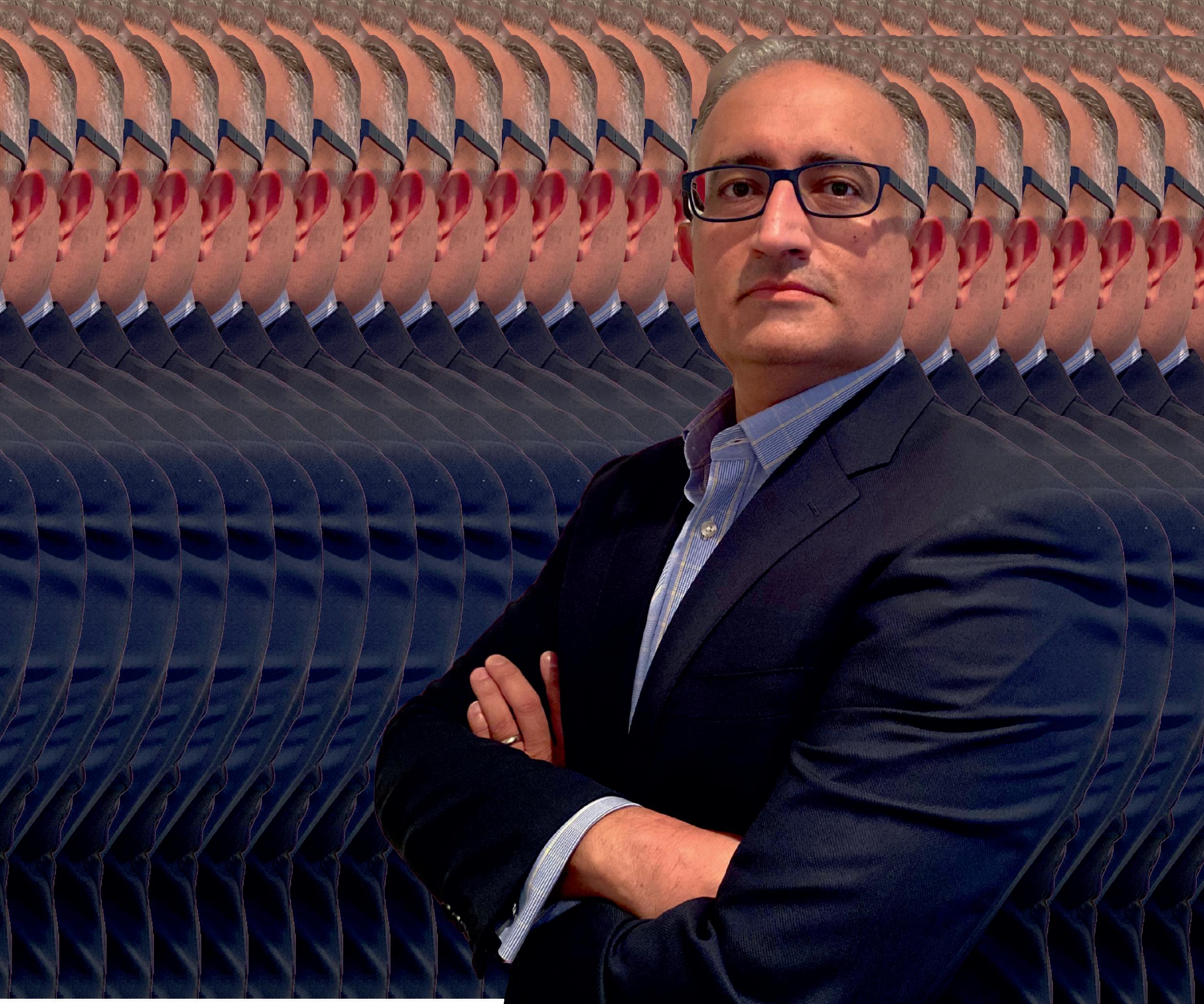





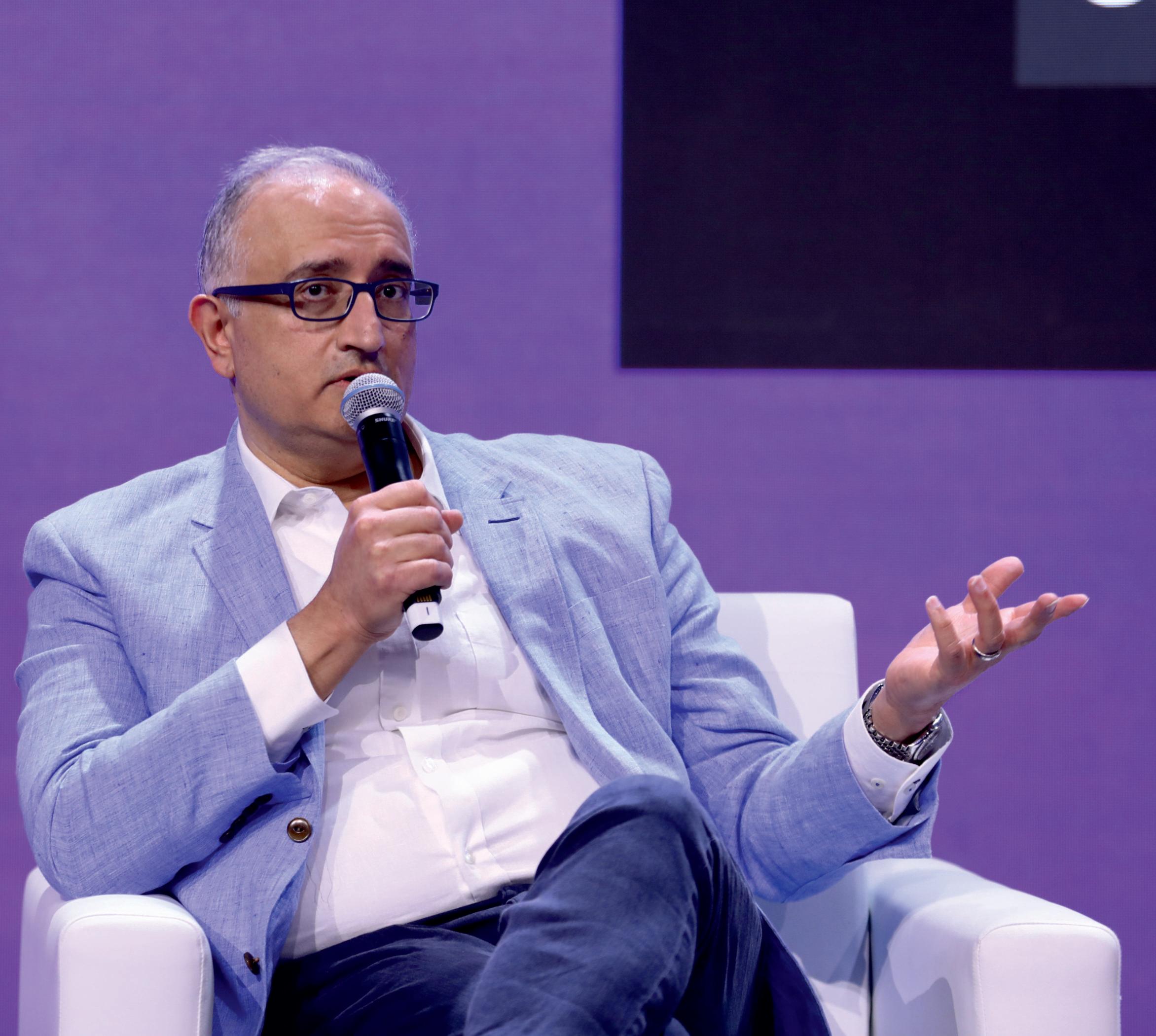















In a globalized world characterized by the speed of technological revolution, accelerated change customer tastes,andincreasinginternationalcompetition,business redesign is no longer an advantage activity but a strategic imperative. Companies are discovering that yesterday's approaches to business are no longer generating sustainable growth In an effort to stay updated and robust, organizations mustundertakechangeinordertopreparethemtoshiftbusiness models, get lean, and deliver unique value to stakeholders Change is not an occasional phenomenon here but a constant processwhereorganizationalcapabilityisrepurposedbasedon driversoftheexternalworld.Businesstransformationspiritis long-term competitive advantage, rather than short-term profit.Aclear transformation strategy enables companies to differentiate in the marketplace, drive innovation, and get aheadpre-emptivelybeforedisruption.
Technologyhasbecomeamongthestrongestchangedriversfor businesses Digitaltechnologies,fromautomationandcloudto data analytics and artificial intelligence, are transforming organizations'operations,theirrelationships,andthewaythey buildvalue Thetop-performingorganizationstoleveragesuch toolsarethosethatcanenhancedecision-making,personalize the customer experience, and react faster to shifting market dynamics. For example, advanced analysis of data can give real-timecustomerinsightinawaythatcompaniescancreate productsandserviceswithcloseintimacytoconsumerintent Likewise,automationcanmakerepetitivetasksautomated so that cost can be minimized and funds can be channeled to strategicinitiatives.
Adoptionoftechnologymustbeaccompaniedbyvisionthatis well-groundedaswellasconnectedtoorganizationalstrategy. Technology investment without an agenda for change has a
likelihood of leading to sporadic adoption and dispersion of investment. Companies must define some business outcomes thattheywishtoattain,suchasenhancedcustomerinteraction, efficient supply chains, or faster cycles of innovation Technology is not an add-on but an enabler and hence the investmentsarepushedthroughgenuinechange Second,there needs to be an e-learning and literacy culture put in place so employeesmayworkwithtechnologyatwork.
Thetechnologyisneededbutindividualsneedtobeencouraged inordertocreatethechange Organizationalculturedrivesthe extent to which new tools and techniques are utilized The cultureofinnovation,teamwork,andflexibilityistheplatform for lasting success. By providing their workers with the autonomy to experiment, to advance ideas, and to make mistakes, they commit themselves to a ongoing process of improvement that makes them competitive Cultural transformationlikethiscallsforintentionalactiononthepartof the leaders themselves, such as open communication, public acknowledgment of effort, and the willingness to defy customary practices. Resistance to change is still one of the greatest obstacles to change. They will have to fear replacement by their job, insecurity, or apparent sophisticationofnewprocedures.
Organizationswillthereforehighlyplaceimportanceonchange management practices grounded in employees and trust. Training and development can make employees competent enough to work in a changed environment, and open communicationcanabatefearsinapositiveway.Flexibleand change-committed transformational leaders are able to take employeesintoembracingchangesratherthanresistingthem. Culturethusbecomesthecatalystthatenablestransformation, with technology and strategy projects aimed towards sustainableresults
Competitive success in today's globalized business world is more aligned with the capacity of the firm to innovate and remainflexible Innovationenablescompaniestodifferentiate products, penetrate new markets, and become proactive in fulfillingcustomers'demandsaheadofcompetition Innovation isnotjustnewcutting-edgetechnologiesbutalsoincremental small-scaleimprovementsinproducts,services,andprocesses. Elastic organizations possess the ability to incorporate these innovations in the short term so that they adapt favorably to
externalities like changes in demand from customers, regulatory environments, or economic downturns. By combiningagilityandinnovation,companiesareinaposition toestablishacycleofconstantrevampingthatmorefavorably positionsthemwithinthemarket.
Businesses need to be positioned to create environments that allow for learning and trial to achieve this. Collaborations amongindustryrivals,businessesandstart-ups,andcorporate andacademicinstitutionscanpowerinnovationbyintroducing new skills and ideas into the equation At the organizational level, action alignment and decision-making can be aligned with cross-functional teams and agile work practices Those organizations which institutionalize and innovate agility can address uncertainty and capitalize on new opportunity best Reacting quickly, but with a good strategic vision is a characteristic of those companies which retain competitive advantagethroughtransformation.
Facilitating business change to competitive advantage sustainingrequiressolvingtechnology,culture,andinnovation in balance. While digital capability enables the platform for speed and agility, it is human beings, process alignment, and strategic intent that drive long-term success. As a rule, transformationalorganizationsnotonlysurvivedisruptionbut shape the future of their business sector The competitive landscape will continue to change, as a result of technology innovation, changing customer needs, and international uncertainty.Companiesthatareabletostrategizelong-termfor transformationandnotasaprojectwithanendtarget willthrive.




In the modern business landscape, few forces have shapedindustriesasprofoundlyasmarketdisruptors. These are companies, products, or technologies that fundamentally alter how business is conducted, often rendering established models obsolete They thrive on innovation, agility, and the ability to identify gaps in traditionalmarkets,offeringnewwaysofdeliveringvalue tocustomers.Theirimpactisnotlimitedtonicheindustries but extends across finance, healthcare, retail, transportation, and even education. Market disruption is notanewphenomenon,butthescaleandspeedwithwhich itoccursinthedigitaleraareunprecedented Advancesin technology, rapid globalization, and shifting consumer expectationshaveallcontributedtoanenvironmentwhere disruptionistheruleratherthantheexception.Established players, once considered untouchable, now find themselvesforcedtoadaptorriskbeingleftbehind.Asa result, understanding the rise of market disruptors is criticalnotjustforentrepreneurs,butalsoforestablished corporations,investors,policymakers,andconsumers.
One of the most significant drivers of disruption is technological innovation. The proliferation of artificial intelligence,blockchain,cloudcomputing,andtheInternet of Things has provided businesses with tools to deliver faster, cheaper, and more customized solutions. For example,fintechcompanieshaveuseddigitalplatformsto bypass traditional banking channels, making financial services more accessible to underserved populations. Similarly, e-commerce giants have disrupted retail by transforming how consumers shop and how businesses manage supply chains. These advances are not merely improvements in efficiency but often represent entirely newwaysofdoingbusiness


Another powerful driver is the changing behavior and expectations of consumers. Today’s customers demand convenience, transparency, and personalization at levels unimaginable a generation ago This demand creates fertile ground for disruptors to challenge traditional providers who strugglewithlegacysystemsandrigidbusinessmodels Ridehailing services, for instance, capitalized on consumer frustration with conventional taxi systems by offering a seamless, app-based alternative. Subscription-based services, fromstreamingplatformstomealkits,havesimilarlyreshaped industries by focusing on user experience and flexible access ratherthanownership
The rise of disruptors has forced traditional businesses to reevaluate their strategies. Large corporations often face challengesinmatchingthespeedandagilityofstartups.Legacy systems,organizationalinertia,andregulatoryframeworkscan make adaptation slow and costly However, many established companiesarelearningtocollaboratewithdisruptorsthrough partnerships,acquisitions,orinnovationlabsthatfosteramore entrepreneurial mindset By doing so, they aim to harness the energyofdisruptionwhilemaintainingthescaleandresources thatonlylargeorganizationspossess.
Atthesametime,disruptioncreatesopportunitiesforentirely new markets and ecosystems Consider the electric vehicle revolution, which not only challenges traditional automakers but also spawns new industries in charging infrastructure, battery production, and renewable energy integration. Similarly, the rise of telemedicine has not only disrupted healthcare delivery but also created demand for digital health platforms, wearable devices, and cybersecurity solutions. While disruption can be unsettling for established players, it alsogeneratesarippleeffectofinnovationthatcanbenefitentire economies
For businesses and policymakers, the key question is how to prepare for an economy where disruption is constant Adaptability and resilience must be built into organizational strategies Companies that cultivate a culture of innovation, invest in emerging technologies, and remain attentive to consumertrendswillbebetterpositionedtothrive.Agilityisno longeraluxurybutanecessity,asthegapbetweendisruptorand disruptedcontinuestonarrow.
Governments and regulators also play an important role in shapingtheimpactofmarketdisruptors Whileitisessentialto create policies that encourage innovation, there must also be safeguardstoensureconsumerprotection,faircompetition,and social equity. Striking the right balance between fostering entrepreneurial energy and maintaining market stability is a challengethatwilldefineeconomicpolicyintheyearsahead. As disruptions become more global in nature, international cooperation will be equally important in addressing crossborderissuessuchasdataprivacy,taxation,andcybersecurity
Theriseofmarketdisruptorsisreshapingtoday’seconomyin profound ways. They challenge conventional wisdom, empowerconsumers,andcreateentirelynewindustries,often at breathtaking speed While disruption poses risks to establishedplayers,italsounlocksopportunitiesforinnovation, growth, and broader participation in the global economy Businessesthatembracechangeandcultivateadaptabilitywill findthemselvesnotjustsurvivingbutleadinginthisnewera. Ultimately, disruption is not a passing trend but a permanent featureoftheeconomiclandscape.Recognizingitassuchisthe first step toward harnessing its potential Whether through technology,consumerdemand,orvisionaryentrepreneurship, disruptorswillcontinuetoredefinewhatispossible Indoingso, theyremindusthatprogressoftencomesfromchallengingthe statusquoanddaringtoimaginenewwaysofcreatingvalue.








